When it comes to transforming outdoor spaces into vibrant, living canvases, hanging baskets offer an exceptional solution that is both elegant and versatile. Whether you’re a seasoned gardener with years of soil under your nails or a novice just starting to explore the joys of cultivating greenery, hanging baskets present an opportunity to express creativity and bring life to even the smallest of spaces.
For beginners, hanging baskets can be an inviting entry point into the world of gardening, offering a manageable project that delivers stunning results. Even experienced gardeners can find new challenges and satisfaction in selecting harmonious plant combinations and experimenting with various arrangements that elevate their outdoor decor.
In this article, you’ll discover the essentials for crafting beautiful hanging baskets that thrive outdoors, from understanding sunlight needs to mastering watering techniques. We’ll guide you through selecting the right plants, ensuring they complement each other and suit your specific environment, all while offering tips and tricks to keep your baskets flourishing throughout the seasons.
Choosing the Perfect Basket
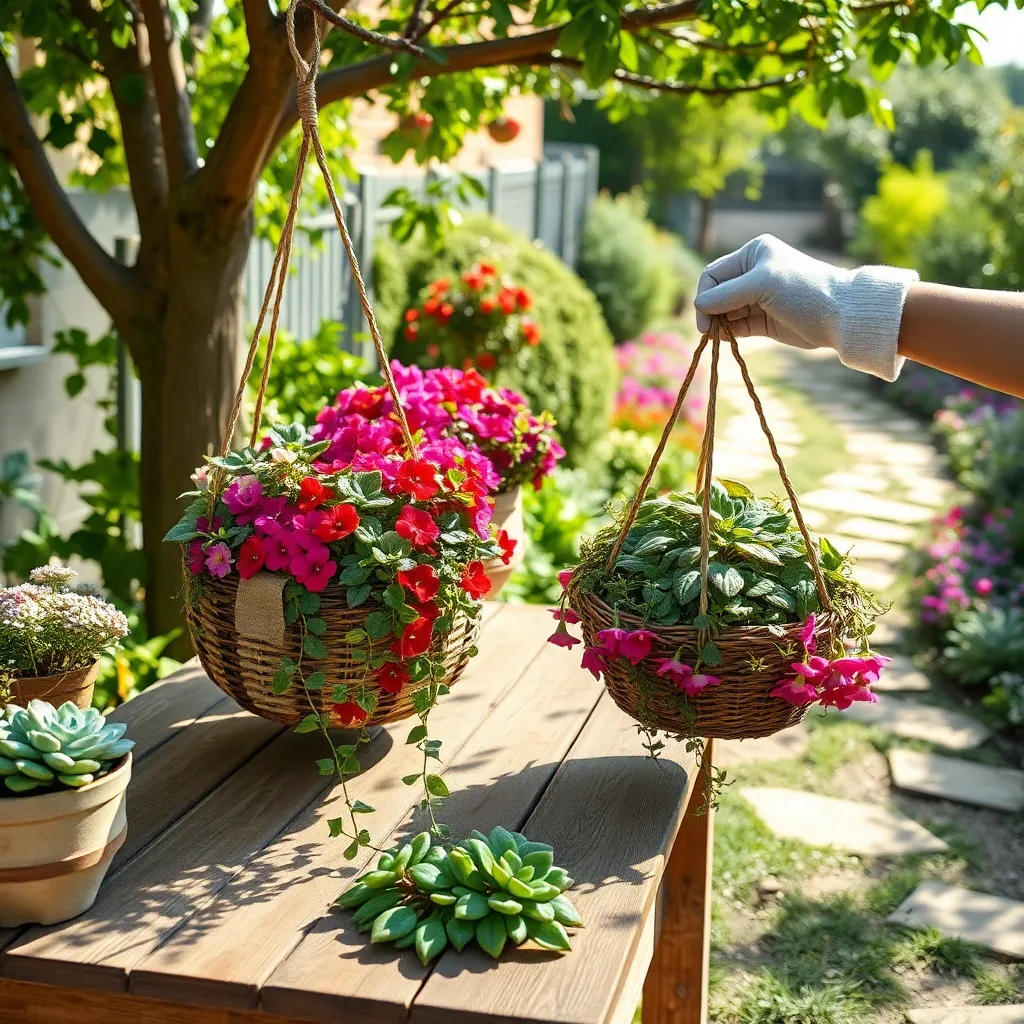
When selecting a hanging basket, consider the material that suits your climate and style. Wire baskets lined with coco coir or sphagnum moss are excellent for warm climates, as they allow good drainage and aeration.
Plastic baskets are lightweight and retain moisture well, making them ideal for areas with hotter, drier conditions. They are also durable and can withstand varying weather without degrading quickly.
Size matters as well; choose a basket that is proportional to your space and plant selection. A larger basket can hold more soil, which helps retain moisture and nutrients for your plants.
For beginners, starting with a 12-inch basket is often recommended, as it provides enough space for a variety of plants without being overwhelming. Advanced gardeners might experiment with mixed plantings in larger baskets to create stunning visual displays.
Ensure the basket has adequate drainage holes to prevent waterlogging, which can lead to root rot. If your basket doesn’t have them, create additional drainage by drilling holes or using a liner that promotes drainage.
Consider adding a slow-release fertilizer to the soil mix to provide a consistent supply of nutrients, especially for flowering plants. This helps to support healthy growth and vibrant blooms throughout the season.
Selecting Vibrant Plant Varieties
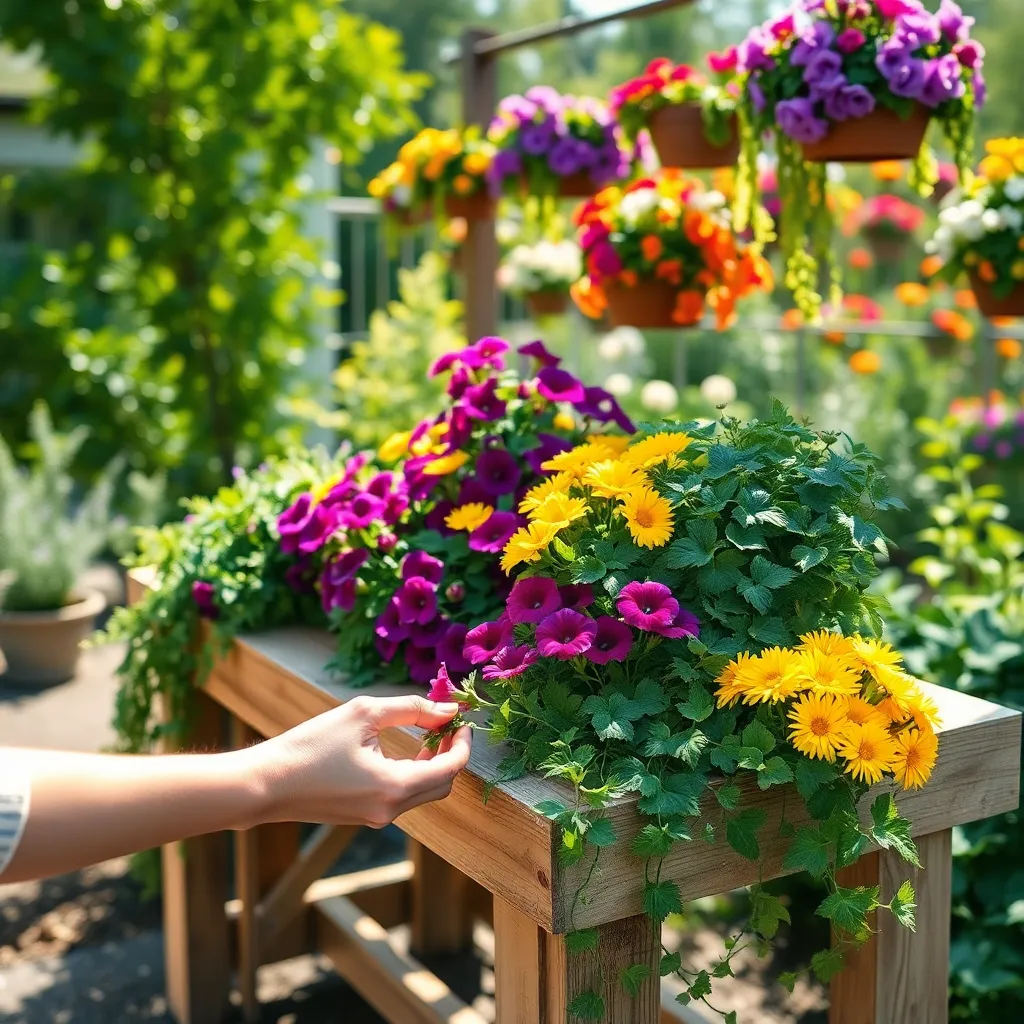
When selecting vibrant plant varieties for your hanging baskets, consider the amount of sunlight your outdoor space receives. Choose sun-loving plants like petunias, geraniums, or calibrachoa if your baskets will bask in full sun for more than six hours a day.
For shaded areas, opt for plants that thrive in lower light conditions. Fuchsias, begonias, and lobelias are excellent choices that will bring a burst of color to dimmer spots.
It’s crucial to also think about the growth habits of your chosen plants. Trailing varieties such as ivy or sweet potato vine add a lush, cascading effect, perfect for creating a dynamic visual display.
Soil plays an integral role in the health of your hanging basket plants. Use a high-quality potting mix that retains moisture yet drains well, as hanging baskets tend to dry out faster than ground plants.
Watering is key to keeping your hanging baskets vibrant and healthy. Check moisture levels daily and water thoroughly until you notice water draining from the bottom, ensuring the roots receive adequate hydration.
For a decorative touch that lasts all season, incorporate a slow-release fertilizer into your planting mix. This ensures your plants receive a steady supply of nutrients, promoting continuous blooms and lush foliage.
Ideal Soil Mix for Hanging Baskets
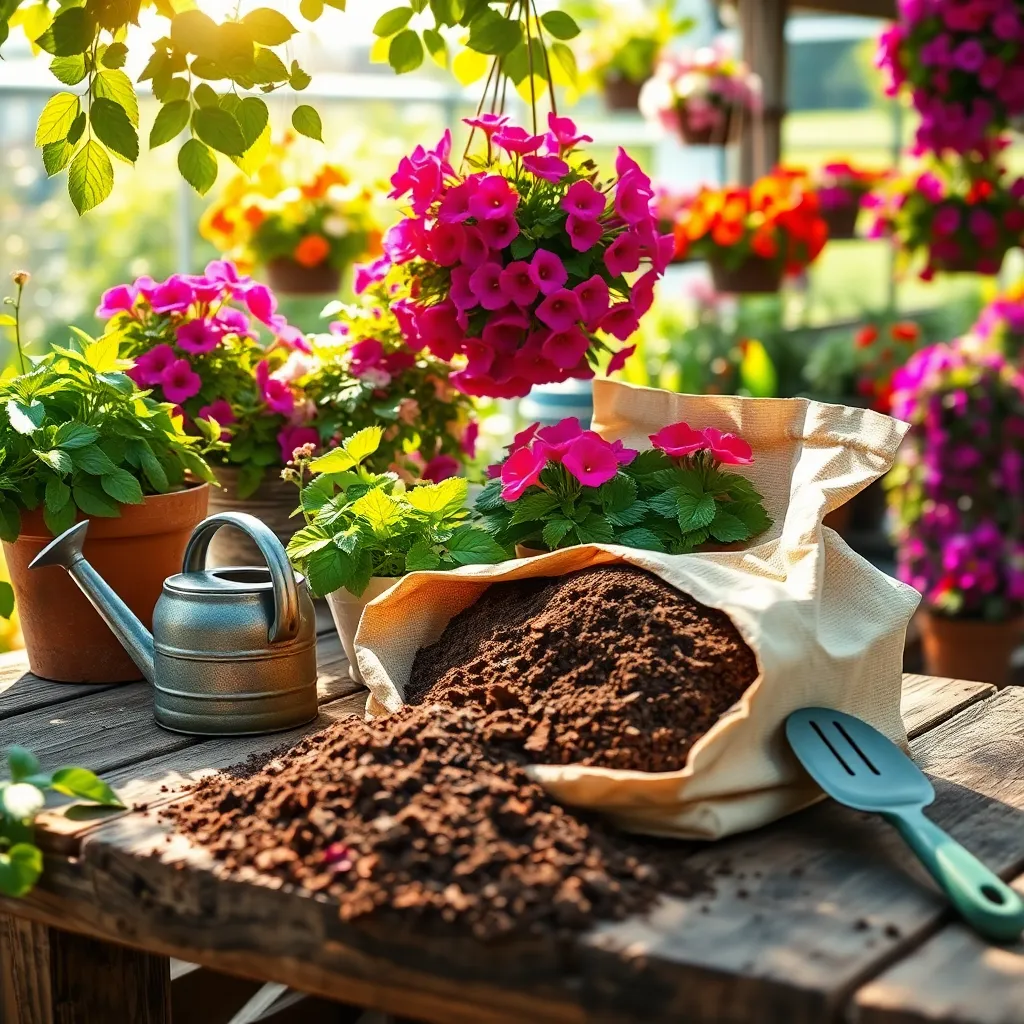
When creating the ideal soil mix for your hanging baskets, it’s essential to focus on both drainage and moisture retention. A well-balanced mix typically includes equal parts of high-quality potting soil, peat moss, and perlite or vermiculite to ensure that your plants thrive.
To enhance the nutrient content, consider adding a slow-release fertilizer to the mix. This approach provides consistent nourishment to your plants, helping them maintain vibrant growth throughout the season.
For gardeners in hot climates, incorporating water-retaining crystals can be particularly beneficial. These crystals absorb water and release it slowly, reducing the frequency of watering and ensuring plants remain hydrated.
It’s crucial to avoid using garden soil in your hanging baskets, as it can become compacted and restrict root growth. Instead, opt for a lightweight commercial potting mix designed specifically for container gardening.
More advanced gardeners might experiment with adding organic matter like compost or worm castings to their soil mix. This addition can improve soil structure and provide an extra nutrient boost, promoting lush, healthy plants.
Watering Tips for Healthy Growth
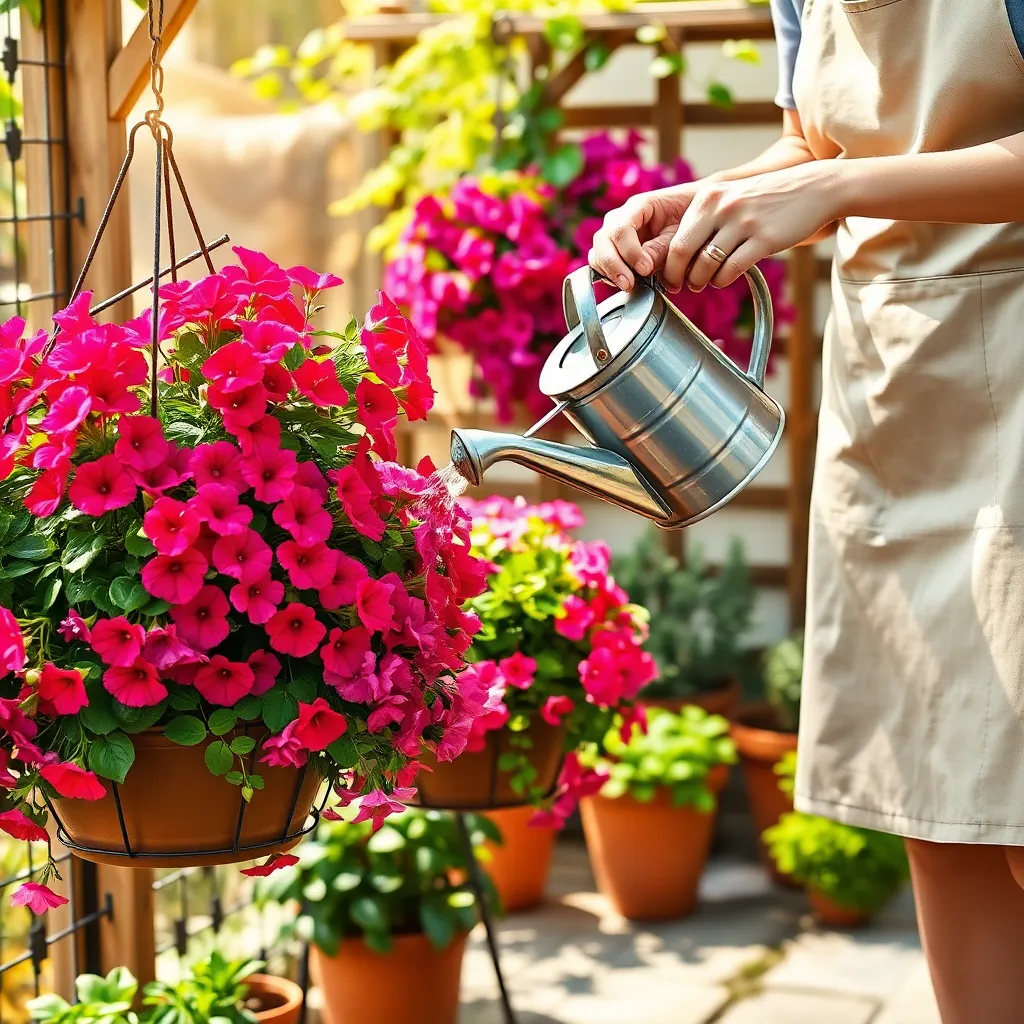
Proper watering is crucial for maintaining the health and beauty of your hanging baskets. Begin by understanding the specific needs of your plants, as different species require varying amounts of moisture.
Feel the soil regularly to determine when your baskets need watering; it should be slightly dry to the touch before watering again. Morning watering is ideal as it allows plants to absorb moisture before the heat of the day.
For beginners, a general rule is to water until you see it draining from the bottom of the basket. This ensures the entire root system receives adequate moisture, preventing dry pockets that can stress plants.
Advanced gardeners might consider using a moisture meter for more precise care, especially during peak summer months. Adding water-retaining crystals to the soil mix can also help maintain consistent moisture levels, reducing the frequency of watering.
Maintaining and Pruning Essentials
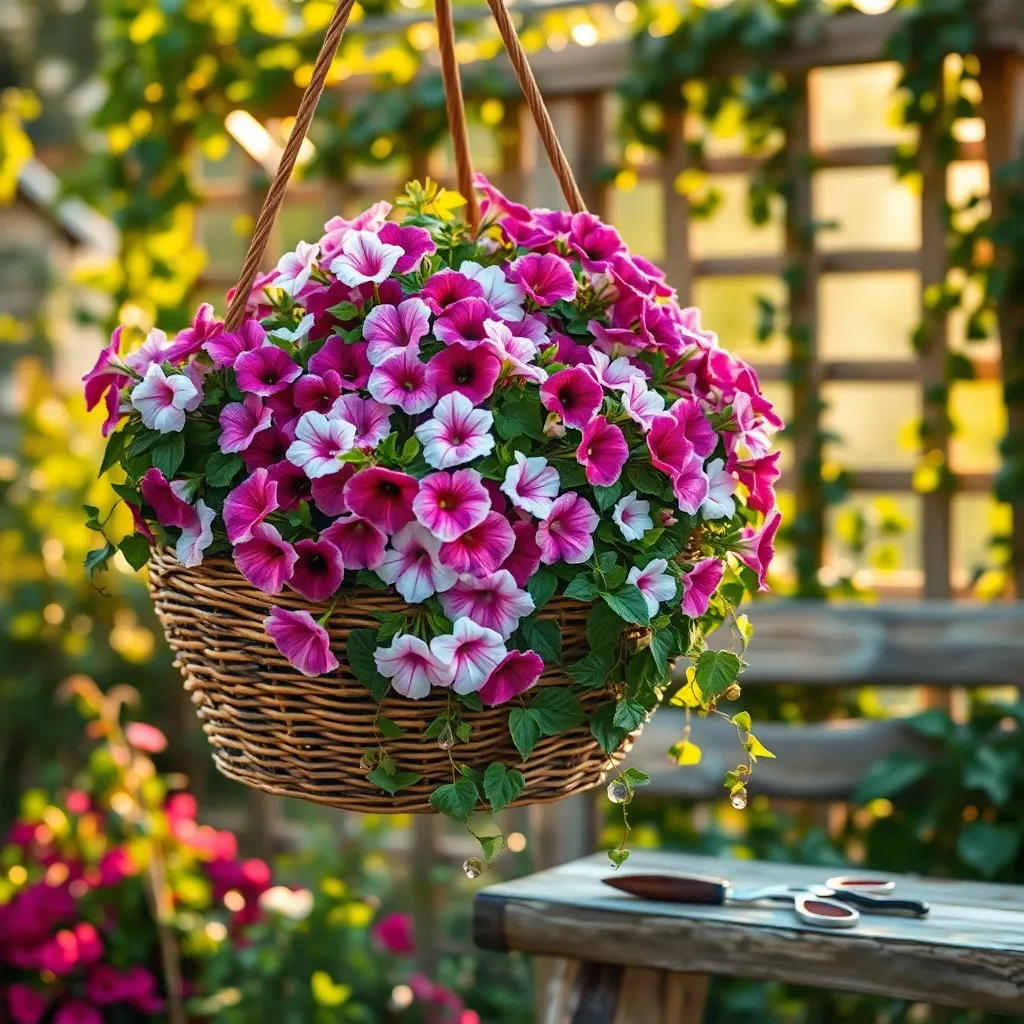
Proper maintenance and pruning are vital for keeping your outdoor hanging baskets vibrant and lush. Begin by regularly removing any dead or yellowing leaves to promote new growth and maintain the plant’s health.
Pruning not only keeps your plants looking tidy but also encourages fuller and bushier growth. Use clean, sharp scissors to snip away spent blooms and overgrown stems, cutting just above a leaf node to stimulate branching.
For optimal health, feed your hanging baskets with a balanced, water-soluble fertilizer every two to four weeks during the growing season. This is crucial because nutrients leach out faster from hanging baskets due to frequent watering.
Consider the types of plants in your basket when deciding on a pruning schedule, as different species require different care. For instance, fuchsias benefit from regular pinching back to promote bushiness, while petunias need deadheading to extend their blooming period.
Conclusion: Growing Success with These Plants
As we wrap up our exploration of “Beautiful Hanging Baskets for Outdoors,” let’s reflect on the five key relationship concepts we’ve intertwined with gardening. First, we discussed the importance of nurturing, emphasizing how both plants and relationships thrive with consistent care. Second, we explored the idea of balance, where the right mix of light and shade parallels the need for space and togetherness. Third, we highlighted growth, reminding us that both relationships and gardens flourish when given room to evolve. Fourth, we touched upon resilience, illustrating how weathering storms can strengthen bonds. Lastly, we delved into beauty, celebrating the unique charm that each relationship brings to our world.
Now, take a moment to identify one relationship in your life that could benefit from a little more attention, and make a plan to nurture it, just as you would your garden. By doing so, you’re sowing seeds of love and understanding.
Don’t forget to save this article for future reference. As you continue to cultivate and cherish your relationships, remember that with patience and dedication, they can blossom into something truly beautiful. Here’s to a future filled with thriving connections and flourishing love!
